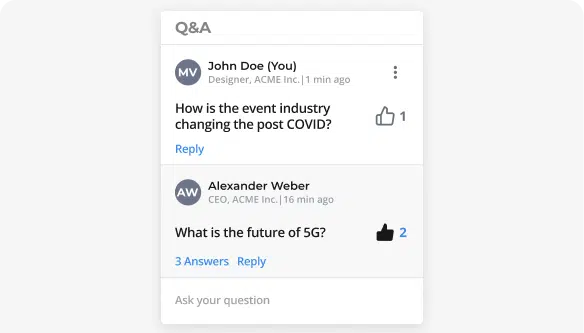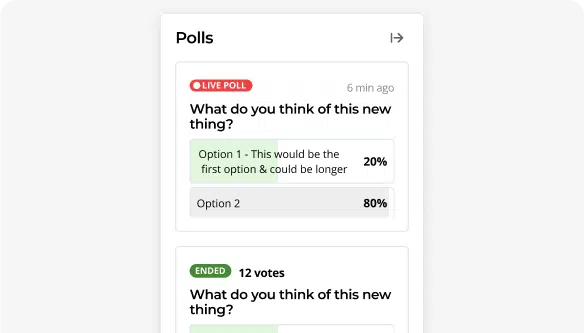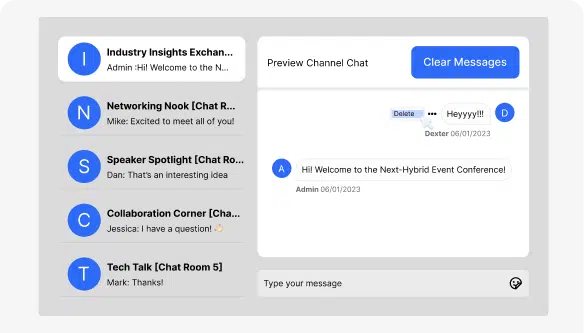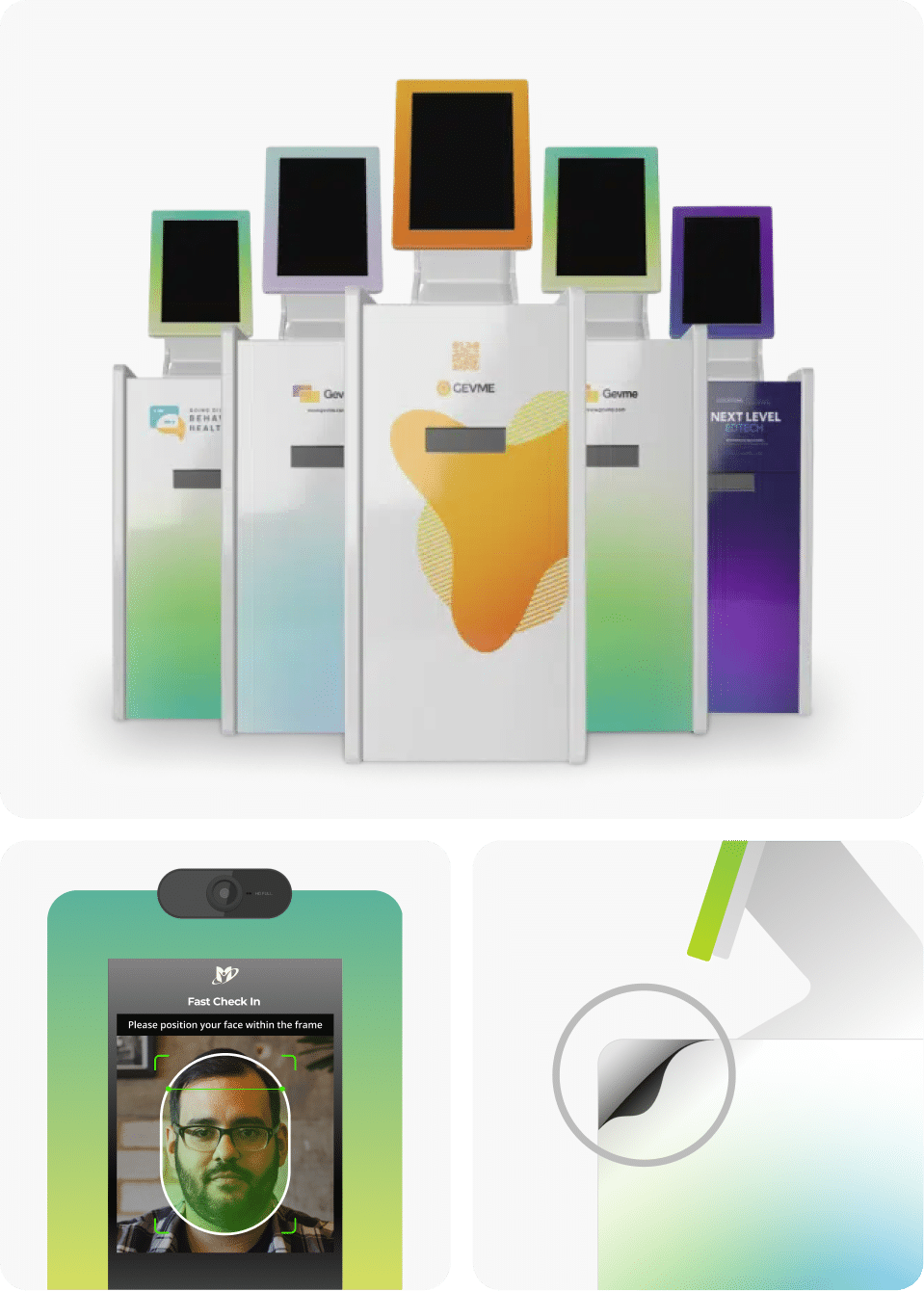Hybrid events are now a mainstay in Australia and New Zealand’s event scene, but delivering a smooth and engaging experience for both in-person and virtual attendees is complex. It requires more than just video streaming or logistics – it demands smart, real-time coordination that adapts to attendees’ behavior, event shifts, and operational demands.
Below is an in-depth breakdown of the main hybrid event challenges faced by ANZ event organisers, coupled with detailed solutions and checklists.
Challenge #1: Balancing Two Audiences Without Leaving Anyone Behind
Virtual attendees often feel like second-class participants. They struggle to network meaningfully, ask live questions, or join breakout rooms, creating a disconnect that reduces their engagement and value perception.
Many hybrid events separate virtual and in-person experiences, relying on outdated sign-up data and siloed platforms. Virtual attendees get generic networking matches and limited interaction, missing live in-room signals that spark connection.
How to Fix It:
- Use behavior-driven AI matchmaking: Gevme goes beyond registration info and uses real-time engagement signals to create more meaningful attendee connections.
- Unified live Q&A: Gevme allows in-person and virtual attendees to ask and vote on questions in the same stream, so remote voices are heard and moderators never miss input.
- Dynamic breakout sessions: Interactive scheduling tools can slot both audiences into shared groups, so location doesn’t decide who you can collaborate with.
Checklist:
- Can virtual participants easily ask live questions?
- Are breakout groups fluidly mixing virtual and in-person attendees?
- Is networking powered by real-time attendee behavior, not static profiles?
Challenge #2: Managing Real-Time Engagement & Attention Across Channels
Virtual attendees face “Zoom fatigue” and distractions causing frequent drop-offs, while in-person attendees may disengage silently. Fixed agendas and session lengths don’t reflect changing attention levels, leading to lost engagement.
Organisers often rely on post-event feedback or guesswork, lacking tools to monitor and react to attention shifts live during sessions.
How to Fix It:
- Track engagement live: With Gevme, organisers can see participation patterns through Q&A, polls, and chat, making it easy to spot when attention is dropping.



- React in the moment: Gevme’s session tools let you pivot quickly – launch a poll, open the floor to questions, or add interactive elements to keep energy up.
- Offer content choice: Gevme gives attendees options to join live, revisit sessions on demand, or access instant AI-powered takeaways – without leaving the platform.
What Not to Do:
Stick to fixed session lengths and ignore live data, missing chances to retain attendees.
Quick Question:
Do you have live monitoring and adaptive tools ready to rescue attention before it’s lost?
Challenge #3: Coordinating Hybrid Event Operations Smoothly
Running simultaneous virtual and physical events multiplies logistical complexity – registration, tech support, real-time updates, and attendee management demand tight coordination.
Using multiple disconnected platforms forces teams to manually juggle data, increasing errors and stress during live event crises.
How to Fix It:
- Contactless check-ins: Gevme’s kiosks and facial recognition make entry fast, safe, and smooth, cutting queues down to seconds.

- Unified event dashboard: Gevme pulls in data across physical rooms and virtual sessions (attendance, engagement, and stream health) so organisers see everything in one place, live.
- Built-in backup options: With Gevme, organisers can quickly update sessions, swap in alternative content, or redirect attendees in real time if plans change.
Avoid:
Using fragmented apps creating multiple tabs and manual exports.
Checklist:
- Do you have one real-time dashboard for all event data?
- Are check-ins fast and contactless?
- Can your platform automatically adjust sessions or content on the fly?
Challenge #4: Ensuring Accessibility and Inclusion for a Diverse Audience
Treating captions and translations as optional limits access for non-native speakers and those with disabilities, reducing engagement and risking compliance.
Auto-captioning often lacks accuracy, and offering only one content type forces attendees into unsuitable formats.
How to Fix It:
- Multilingual AI summaries and captions: Snapsight, Gevme’s event content intelligence tool, supports 80+ languages, facilitating real-time translation and summaries for broad accessibility.
- Multiple content formats: Attendees choose from full videos, transcripts, or quick recaps matching their schedules and preferences.
- Sentiment analysis: Snapsight measures audience mood live, enabling content or delivery adjustments to maximize resonance.
Pitfall:
Relying solely on machine auto-captions without auditing causes errors and frustration.
Checklist:
- Do you provide multilingual captions and formats?
- Are captions reviewed for quality?
- Do you use sentiment data to adjust content live?
Challenge #5: Predicting Attendance and Managing Capacity Efficiently
Unpredictable no-shows and inaccurate attendance forecasting lead to overcrowded rooms or wasted space, creating a poor experience and resource inefficiencies.
Estimates based on guesswork or surface analytics don’t reflect real fluctuations or patterns.
How to Fix It:
- AI predictive analytics: Gevme tracks registration trends and engagement, but predictive AI for forecasting capacity is still developing, not a core feature today.
- Dynamic resource allocation: Gevme gives organisers flexibility to adjust virtual capacity and manage onsite flow with real-time insights.
- Analyse across events: The more historical datasets you use, the sharper your predictions will become.
What Not to Do:
Ignore data or settle for obvious trends that don’t aid decision-making.
Checklist:
- Are you applying AI-driven attendance forecasts?
- Do you adjust physical and virtual capacities dynamically?
- Are you analyzing multiple event datasets to improve forecasts?
Final Word
Hybrid events in Australia and New Zealand have moved past trial runs – they’re now a staple. Running them smoothly means engaging two audiences at once, keeping live signals steady, and giving organisers the flexibility to adapt in real time.
Before adopting “AI-powered” tech, ask yourself:
- Does it provide real-time insights and actions, not just reports after the event?
- Does it treat virtual and in-person attendees equally?
- Can it adapt instantly to changes without manual firefighting?
- Are the benefits backed by measurable KPIs?
If the answer is “no,” you’re adding noise, not value.
Finding it hard to keep virtual and onsite attendees equally engaged?
Gevme’s AI features track, personalise, and adapt experiences for every participant.
FAQ’s
The main hybrid event challenges in Australia and New Zealand include balancing two audiences, managing engagement, smooth operations, accessibility, and predicting attendance.
Organisers can improve engagement by tracking attention live, adding polls and Q&A, and offering AI-powered session takeaways—addressing hybrid event challenges in Australia and New Zealand.
A major reason is disconnected experiences. Using unified Q&A, AI matchmaking, and dynamic breakout rooms helps solve hybrid event challenges in Australia and New Zealand.
Accessibility can be improved through multilingual captions, transcripts, and sentiment analysis—tackling one of the most pressing hybrid event challenges in Australia and New Zealand.
AI helps organisers predict attendance, personalise networking, and monitor engagement in real time, making it a powerful solution to hybrid event challenges in Australia and New Zealand.
